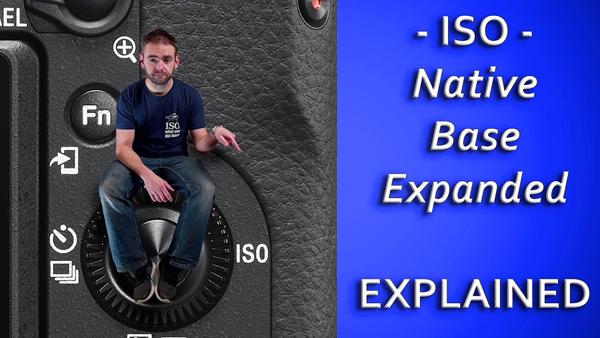“Native ISO" vs “Base ISO” vs “Expanded ISO”—What’s the Difference?

ISO is a very important concept and makes up one side of the Exposure Triangle; the other two being aperture and shutter speed. These three variables interact to arrive at a correct exposure.
As we explained in last week’s article on the basics of ISO, the numerical value represents the sensitivity of an imaging sensor, and can be set automatically by the camera or manually by the photographer. Today we're going to dig a bit deeper and explore the difference between a camera’s “Native ISO,” what’s referred to as “Base ISO,” and the setting known as “expanded ISO.”

As you’ll see in the quick explainer below from photographer Dave McKeegan the choice you make is often determined by prevailing light conditions and the scene you are photographing. The option you choose often involves compromises that can affect the look of an image even if it’s properly exposed.
McKeegan’s goal is to eliminate any confusion about the concept of ISO, and he begins with a quick review of how ISO works to help determine an exposure. If you’re confident that the intro is too basic for you, simply skip to the three-minute mark of the video for a deeper dive into the main subject of this tutorial.

As you’ll see, Base ISO varies by camera model and manufacturer. So while ISO 100 is the most common Base ISO, sometimes it’s ISO 64 or even ISO 200. McKeegan further explains that Native ISO isn’t a specific setting, but rather the range of sensitivity offered by your camera from Base ISO to the maximum default sensitivity.
Finally, the so-called Expanded ISO refers to using a camera’s built-in software to push sensitivity limits further—both on the low and the high end of the range. While the numerical values are worth understanding, the key to this tutorial is knowing when to use each of the options, when it’s better to stick with Base ISO and modify aperture or shutter speed to arrive at a proper exposure, and how your ultimate choice determines image noise, the need for a tripod, and other key variables.
After watching the video, check out McKeegan’s YouTube channel for more helpful advice. You may also want to look a last week’s story with eight basic facts about ISO.














































